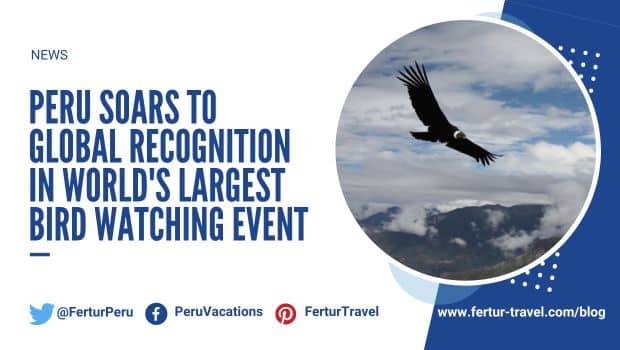
Peru Soars to Global Recognition in World’s Largest Birdwatching Event
How 1,027 Peruvian and visiting birdwatchers helped Peru claim second place in Global Big Day 2025
In a spectacular display of natural diversity and citizen science, Peru has once again proven why it’s considered one of the world’s premier birdwatching destinations.
During Global Big Day 2025 — the world’s largest single-day bird watching event — Peru recorded an astounding 1,399 bird species in just 24 hours, securing second place globally in this prestigious competition organized by the Cornell Lab of Ornithology.
A Day of Record-Breaking Discovery
May 10, 2025, marked the 10th anniversary of Global Big Day, coinciding perfectly with World Migratory Bird Day. Across the globe, 1.8 million birders participated in this massive citizen science effort, but few countries matched Peru’s extraordinary showing. With 1,027 participants spread across all 24 regions of the country — from the Amazon rainforest to the Pacific coast — Peru demonstrated the incredible power of coordinated conservation effort.
The numbers tell a remarkable story: Peruvian birders submitted 4,530 checklists through eBird, the Cornell Lab’s citizen science platform, surpassing their previous year’s total and highlighting the growing enthusiasm for birding in the country. Even more encouraging, 289 new birdwatchers joined the effort this year, showing that Peru’s passion for avian conservation continues to spread.
Danny Vargas, one of Fertur’s preferred expert Bird Watching guides, emphasizes that Global Big Day extends far beyond a simple celebration of avian diversity.
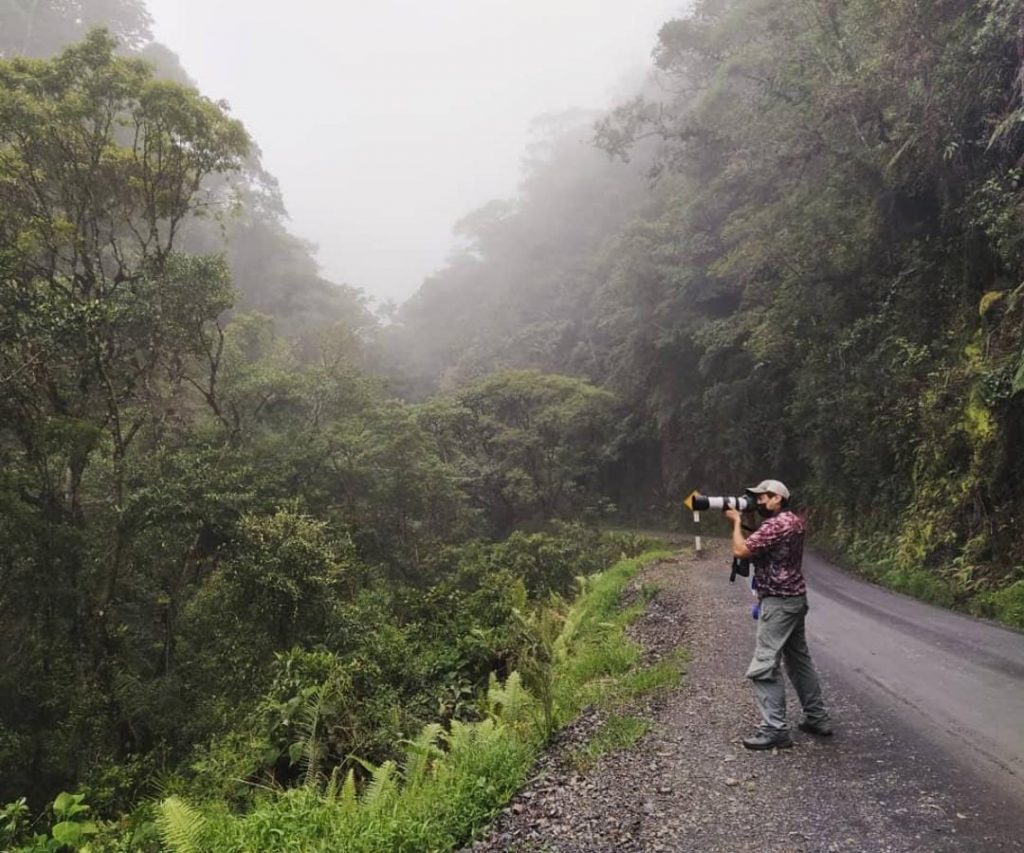
“Each sighting submitted from Peru contributes to a broader understanding of bird distribution and helps detect population trends over time,” Vargas said, highlighting the citizen science foundation that makes the event so valuable to researchers and conservationists.
The real-time data collected during Global Big Day serves as an essential tool for shaping conservation strategies at both local and international levels, Vargas added.
Rather than viewing Global Big Day as merely a single-day birding event, Vargas positions it as something much more significant — a worldwide movement dedicated to protecting birds and wildlife habitats.
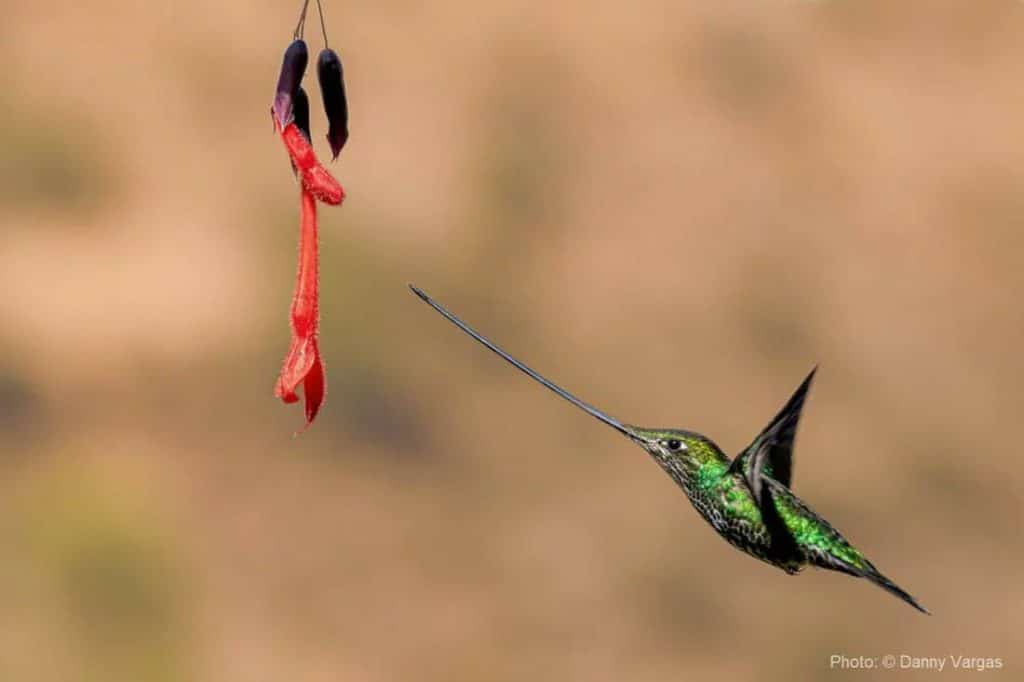
From Coast to Cloud Forest: Peru’s Diverse Ecosystems Shine
What makes Peru’s achievement particularly impressive is the diversity of ecosystems that contributed to the count. Participants documented species across:
- Amazon Rainforest: Home to countless tropical species found nowhere else
- Andean Highlands: Where high-altitude specialists thrive in dramatic landscapes
- Coastal and Marine Areas: Critical stopover points for migrating shorebirds
- Wetlands: Vital habitat for waterbirds and seasonal visitors
- Urban and Rural Zones: Proving that birds adapt to human-modified landscapes
This geographic breadth not only boosted Peru’s species count but also provided scientists with valuable data about bird distribution across the country’s varied habitats.
A Model of Collaborative Conservation
Peru’s success wasn’t achieved by chance — it was the result of coordinated efforts between public institutions, conservation organizations, and passionate individuals. The event brought together an impressive coalition including:
- Corbidi (Peru’s local eBird partner)
- PromPerú (Peru’s tourism promotion board)
- SERNANP and SERFOR (government environmental agencies)
- CANATUR Perú and Conave (tourism and birding associations)
- Universities, local governments, and tourism operators throughout the country
This collaboration demonstrates how effective conservation can be when organizations work together toward a common goal.
Beyond the Count: Conservation with Purpose
While the impressive species tally makes headlines, Global Big Day serves a deeper purpose. Every bird observation submitted to eBird becomes part of a massive global database that scientists use to track bird populations, understand migration patterns, and identify areas needing conservation attention.
For Peru, this data is particularly valuable. As a megadiverse country hosting over 1,800 bird species—more than found in all of North America—Peru’s participation in Global Big Day contributes crucial information about Neotropical bird populations at a time when many species face increasing threats from habitat loss and climate change.
Eco-Tourism Takes Flight
Peru’s Ministry of Foreign Trade and Tourism (Mincetur) sees this achievement as more than a conservation win — it’s a powerful example of Peru’s promise as a sustainable tourism destination. The country’s Global Big Day performance underscores its unique role in avian ecotourism, where travelers connect with nature while supporting local communities and conservation.
This form of tourism brings economic benefits to remote areas where traditional development might be challenging, creating incentives for habitat preservation while providing income for local guides, lodges, and communities.
Looking Forward: A Model for the World
Peru’s Global Big Day 2025 success shows how citizen science can drive both conservation and tourism. By engaging professional ornithologists and curious families alike, Peru proves that conservation can be accessible, enjoyable, and rooted in community.
As climate change and habitat loss strain bird populations worldwide, events like Global Big Day matter more than ever. They provide vital scientific data and unite a global community committed to protecting birds.
For Peru, second place in Global Big Day 2025 is more than a ranking — it’s a testament to the nation’s leadership in biodiversity conservation and sustainable tourism. With its rich natural heritage and growing ranks of passionate birders, Peru is poised to soar even higher in future events.
Whether you’re a seasoned birder or simply curious about nature, Peru’s achievement is a powerful reminder of what’s possible when people come together to celebrate and safeguard the birds we share this planet with.
Consider planning an eco-tourism trip that supports local conservation efforts and communities. Every birding excursion helps contribute to the protection of Peru’s remarkable avian heritage.
 Bus ride up to Machu Picchu hiked, AGAIN!
Bus ride up to Machu Picchu hiked, AGAIN! 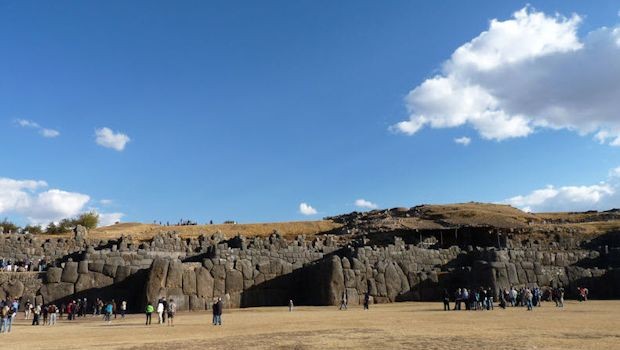 Restoring the Inca ecological balance at Sacsayhuaman
Restoring the Inca ecological balance at Sacsayhuaman  Google gets OK to scan Machu Picchu into Google Street View
Google gets OK to scan Machu Picchu into Google Street View  Mr. Monopoly Tours Lima in Search of Votes
Mr. Monopoly Tours Lima in Search of Votes  Arequipa tour attraction Juanita mummy placed in deep freeze
Arequipa tour attraction Juanita mummy placed in deep freeze 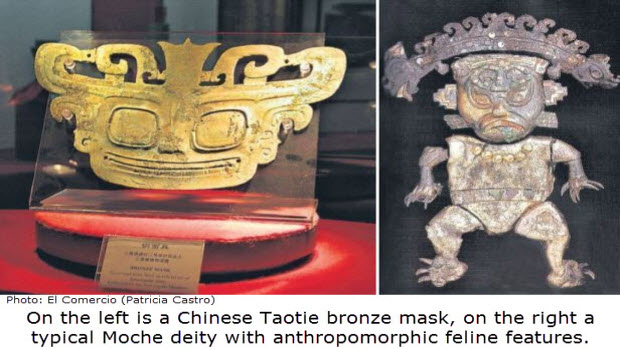 Ancient Link Between Chinese And Peruvian Civilizations?
Ancient Link Between Chinese And Peruvian Civilizations?  Nazca Lines archaeologist faces charges for TV tour
Nazca Lines archaeologist faces charges for TV tour  Paddington Bear’s Peru Tour includes COP20 appearance
Paddington Bear’s Peru Tour includes COP20 appearance